Originally produced as a one-hour TV drama starring Rod Steiger and written by Paddy Chayefsky, “Marty” is a poignant feature film about a lonely, unattractive, unmarried middle-aged man who meets a woman at a dance hall who is also lonely and unattractive. By the night’s end, both of them manage to break through their inferior attitudes and realize that they may have a bright future together.
Starring Ernest Borgnine as the titular character and Betsy Blair as his love-interest, this 1955 film also features a lot of the supporting actors that appeared in the 1953 television production (both of which were directed by Delbert Mann). Despite being a modest, low-budget film, “Marty” became a huge hit in the box office and ended up winning four Academy Awards, including best actor for Borgnine and best picture of the year. (And with a 91-minute running time, it’s currently the shortest film ever to receive the coveted prize.)
Like most 1950’s movies that take place in NYC, the majority of “Marty” was filmed back in Hollywood, but several scenes were shot on-location in New York. And one thing that makes this film particularly unique is that they shot all of the on-location footage in the rarely-used and magnificently unglamorous borough — the Bronx.
Little Italy
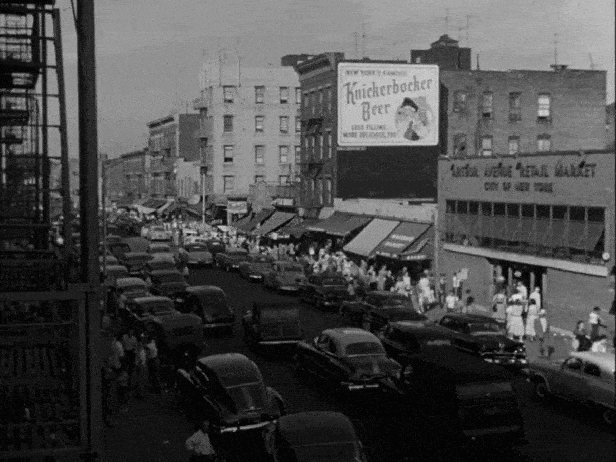
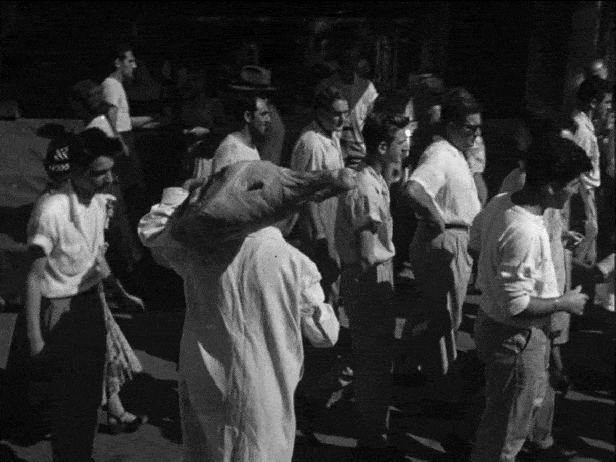
It was pretty obvious that this opening scene took place on Arthur Avenue in Bronx’s Little Italy, especially with the clearly-labeled Arthur Avenue Retail Market building being featured prominently in the shot. (Although it might be noted that the building got a bit of a make-over in the late-2000s and now appears slightly taller.)
The Arthur Avenue Retail Market was built in 1940 on a piece of land that used to be a sheep meadow, and was one of several markets to open under then-Mayor Fiorello LaGuardia. His mission was to get the all of pushcart vendors who would congregate in the poorer ethnic neighborhoods off the streets and into more controlled spaces. Originally there were 150 stalls in this Bronx marketplace, giving its customers one centralized location to satisfy a wide variety of their shopping needs — from sausage-makers to florists, from bakers to fishmongers. And of course, the market had its share of in-house butchers.
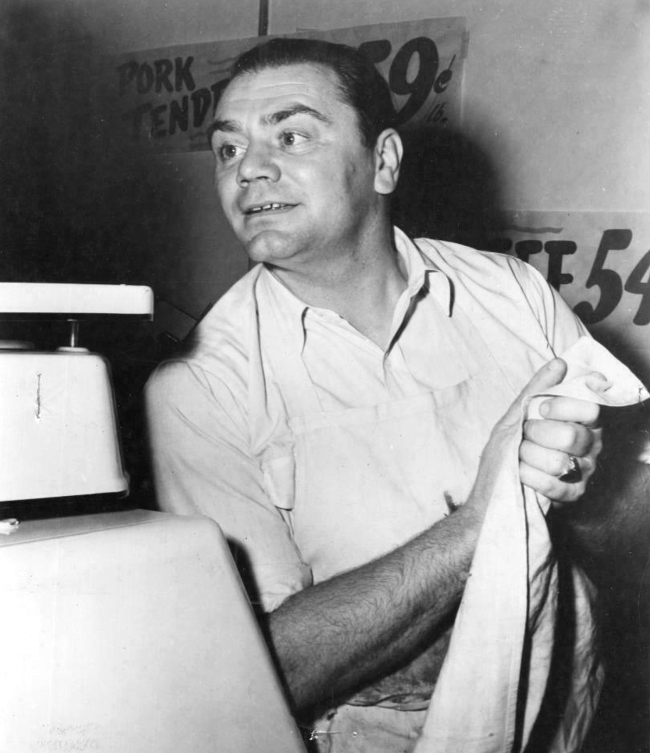
As to the butcher shop that appears in the film, according to historian and founder of Arthur Avenue Food Tours, Danielle Oteri, the production filmed inside the “Oteri’s Butcher Shop” at 2374 Arthur Avenue, which was started by her great-grandfather, Albino.
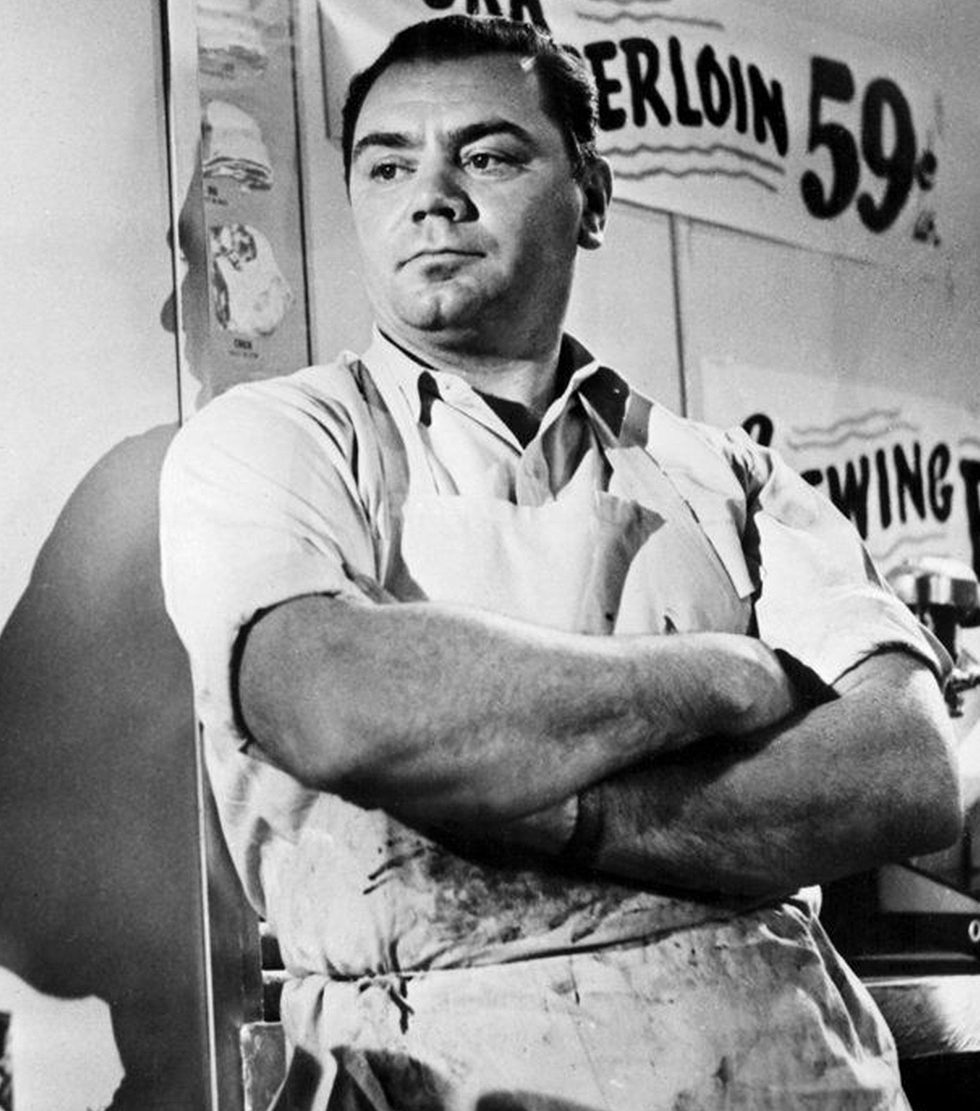
Even though it was a proper butcher shop at the time of the filming, when Albino Oteri first acquired the retail space in the early 1900s, he opened it as a baccala store (a.k.a., dried and salted cod) — a cheap culinary staple in Italian enclaves. By the end of World War II, the Great Depression was over and people could finally afford to buy more expensive meats, so the Oteri family officially turned the space into a full-fledged meat market.
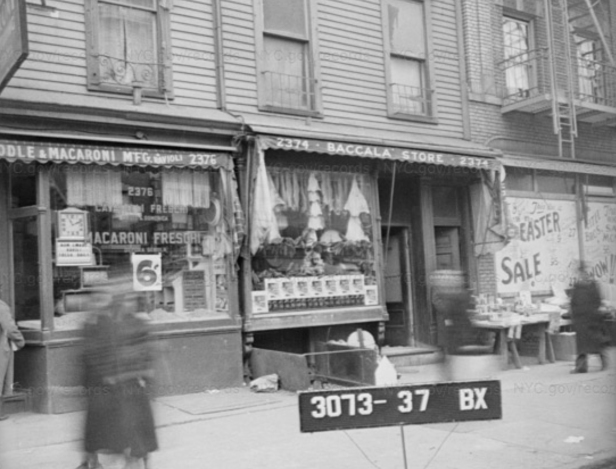
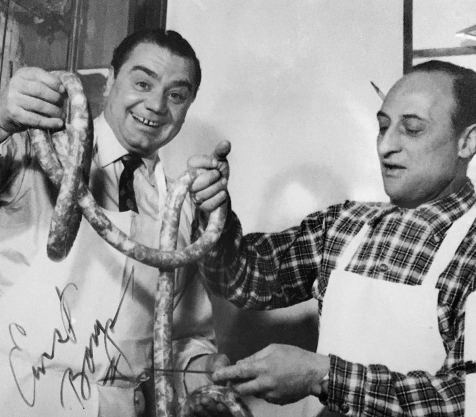
By the time Marty began filming in the the fall of 1954, writer Paddy Chayefsky and producer Harold Hecht (who were both Bronx natives) knew that Oteri’s Butcher Shop would be the perfect place to be the occupational setting for the film’s main character.
According to Danielle, her Uncle John actually helped teach Ernest Borgnine how to cut meat like a real butcher, so his performance would appear more authentic in the film. Also, in the original screenplay, the shop owner’s name was “Mr. Gazzara,” but apparently Uncle John was able to convince the film production to change the name to “Mr. Oteri.”
A butcher shop still exists at that address today, although it changed hands around 1980 and is now called “Vincent’s Meat Market.” But I’m sure the sausages are just as good today as they were in 1955.
Leaving the Stardust Ballroom
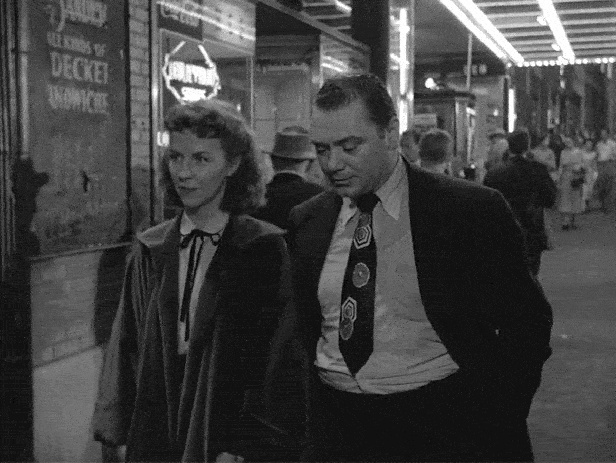
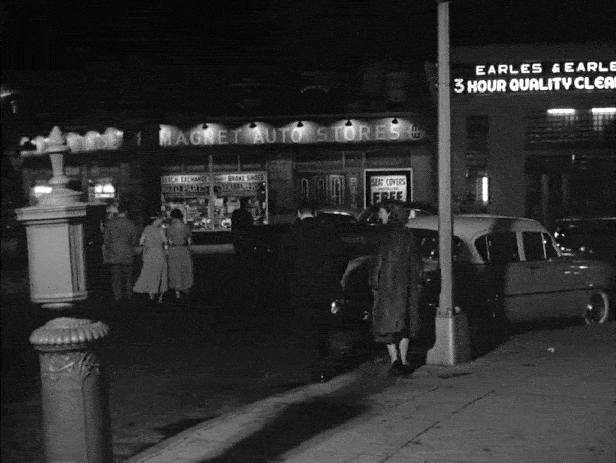
In general, there wasn’t a lot of specific information about the filming locations of Marty on the internet. None of my go-to movie websites like “On the Set of New York” or “the Movie District” had any entries for it, and IMDB only had generic listings without giving any exact addresses. However, because this scene briefly features the former RKO Chester Theatre, I was able to find out its filming location by looking up the address on the movie theater website, Cinema Treasures. On the website, not only did I get an exact address for the theater, but thanks to a robust comments section, I also got a good sense of what the movie house and its surrounding neighborhood were like in the 1950s and 60s.
Located not too far from the Bronx Zoo’s southern entrance and situated near the corner of Boston Road and West Farms Road, the Chester Theatre opened in the winter of 1927 under a local management company, and presented both movies and vaudeville acts. When RKO took over the 2,473-seat theater, the stage shows were eliminated and traditional double-feature programs were shown there. (At the time this scene was made, it looks like 1954’s Ride Clear of Diablo, starring Audie Murphy and Dan Duryea, was playing at the the theater.)
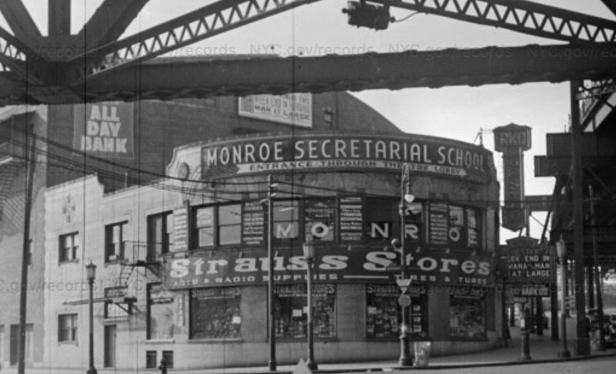
Due to low ticket sales, the RKO Chester Theatre eventually closed its doors in 1968 and the interior was converted into a warehouse. Later on, the space became an auto repair shop (which you entered from W Farms Road), but amazingly, they kept the balcony and most of the opulent auditorium fixtures in place, albeit in grave disrepair.
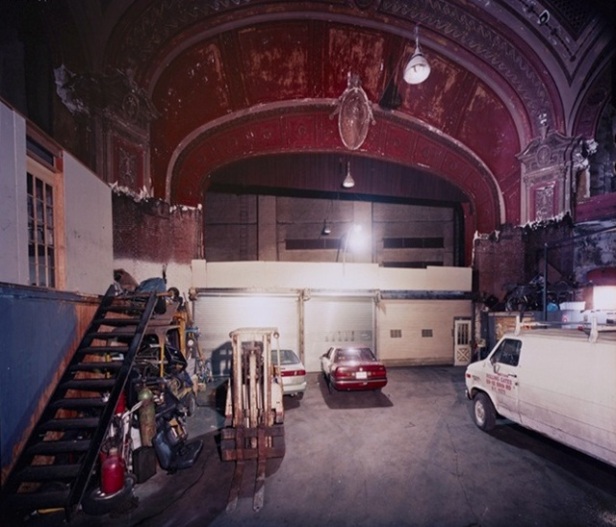
It was right around 2015 when I first started researching this scene location and learned about the RKO Chester in the the West Farms Square section of the Bronx. Even though NYC had been experiencing an accelerated amount of demolition in the last few decades, I still had high hopes that the RKO building would still be around since the Bronx had been mostly exempt from this penchant to raze and replace. Unfortunately, that wasn’t the case for the West Farms Square area of the Bronx which was being aggressively revitalized and I missed my opportunity to see the gloriously ornate RKO Chester Theatre in person by about five years.
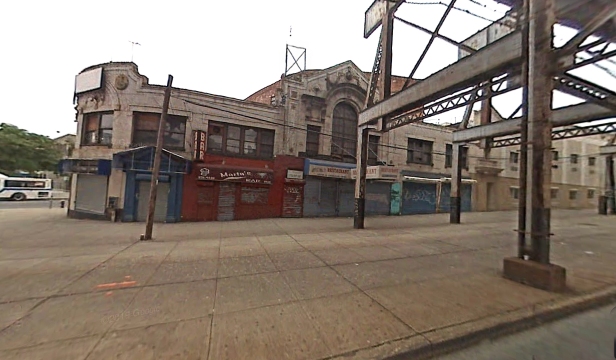
It seems as though this revitalization of the area started in the early 2000s when the neighboring “hot sheets” hotel used by local prostitutes was raided and shut down. By around 2004, the building was renovated inside and out, and reopened as a family-friendly Howard Johnson’s Hotel. In the spring of 2010, the RKO Chester and its neighboring building got completely demolished (surprisingly without much outcry from any preservationists), and eventually replaced with a bland apartment building.
As to the Stardust Ballroom where Marty and Clara first meet, I wasn’t sure if it was officially located on the same street as the RKO Chester, or for that matter, whether the interiors were actually shot at the real dance hall or on a studio set — although my suspicion is that it was faked back in Hollywood.
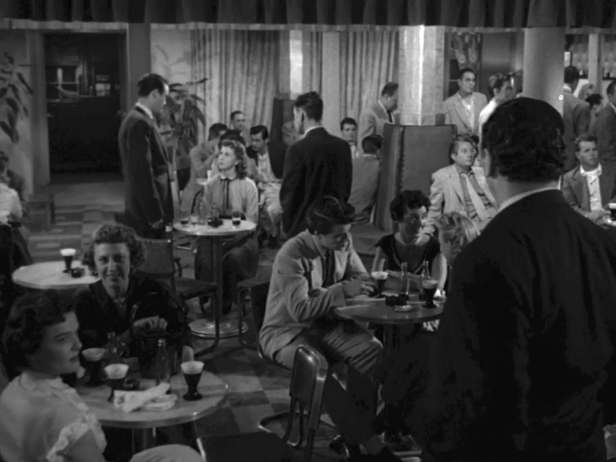
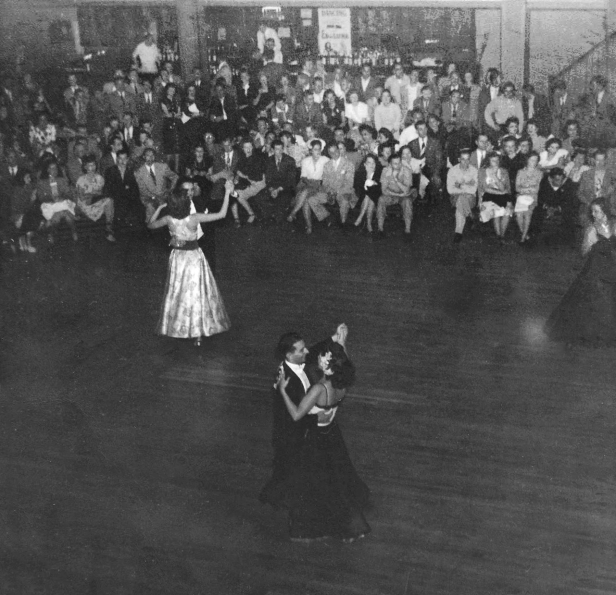
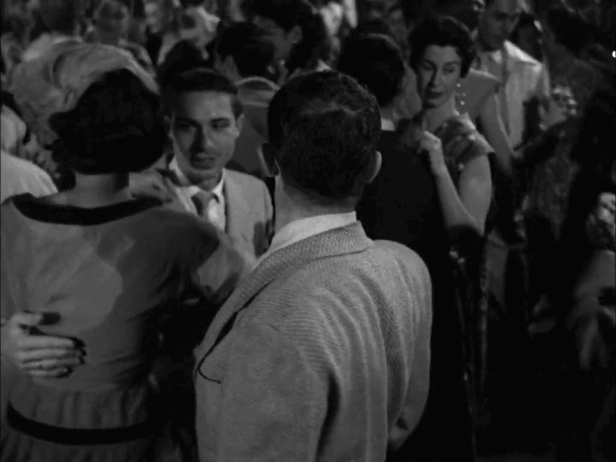
Regardless of whether the interior was real or fake, I was curious to figure out if the actual Stardust Ballroom was next to the RKO Chester or not. (Granted, you could see the exterior of the building which Marty and Clara exited had “Stardust” signage, but I thought it could have been set dressing.) After searching through a couple old courtroom transcripts that had witnesses discussing the Bronx ballroom, I decided they were unreliable sources when I found different addresses given during the trial (which seemed to vex the judge and lawyers). Finally, my research partner, Jeff Blakeslee, found a reference to the ballroom in an old local paper that gave an address of 1930 Boston Road which would indeed place it next to the RKO Chester. After that, I was able to find an ad for the Stardust in a 1948 issue of the Civil Service Leader, which also listed the address as 1930 Boston.
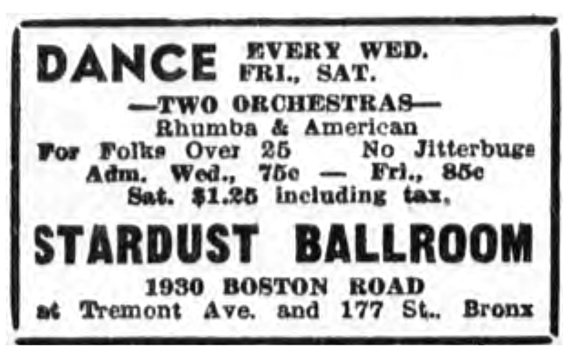
Part of the confusion with the Stardust’s address was the fact that the club moved to at least one other location after the RKO Chester closed down — specifically, to 3435 Boston Road (near Gun Hill Road) where the venue changed to predominately African American-influenced music such as funk, reggae and jazz, as well as the emerging Bronx hip hop.
Aside from changes in music style and admission price, I noticed by the ads that the ballroom went from “no jitterbugs” in 1948, to simply “no sneakers” in 1980. I guess you could dance whatever you wanted in the 80s, so long as you had proper footwear.
Walking on Fordham Road
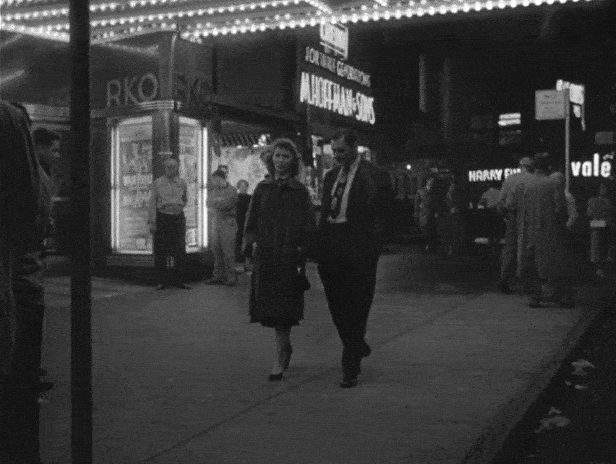

This was another location that was identified thanks to a featured movie theater in the scene — this time it was the RKO Fordham Theatre.
Often considered one of the top movie houses in the Bronx, the Fordham Theatre was popular due to being located in the heart of the Grand Concourse/Fordham Road shopping district. Originally designed for vaudeville shows, the theater opened its doors on April 14, 1921, but by 1929, it merged with the RKO circuit and exclusively showed movies.
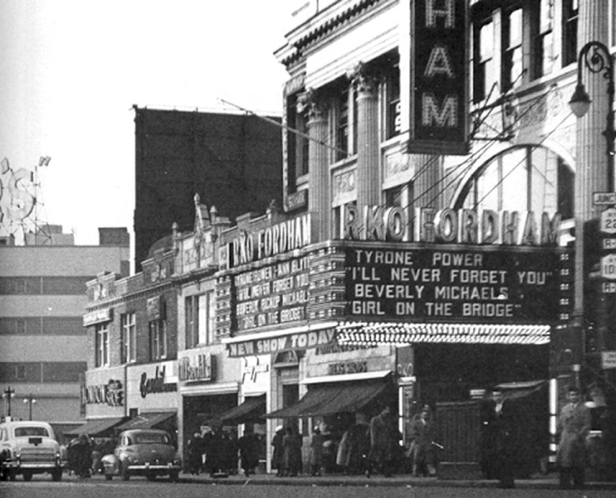
Unlike the Chester, the Fordham Theatre survived into the modern era of multiplexes that were emerging in the 1970s, by converting into a four-screen facility by 1980. But its survival didn’t last much longer.
Even though the destruction and devastation that was happening in the South Bronx during the 70’s and 80s didn’t really make it up to the Fordham area, a general downward shift in the economy (and ticket sales) eventually forced the Fordham Theatre to close down. The building was demolished in 1987, and one year later, an uninspired retail structure took its place.
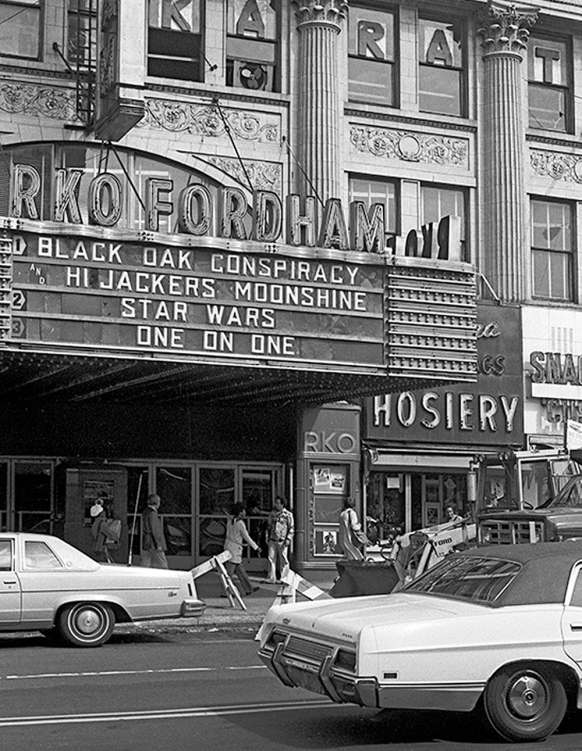
While the RKO Fordham Theatre may no longer be around, the building that housed Albrecht’s department store (which appeared in the background at the end of this quick scene) is still standing today. But the store fronts have changed dramatically over the years and are more or less unrecognizable from the film.
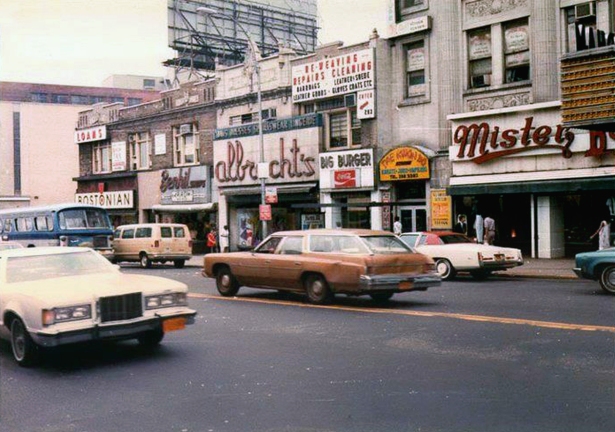
One interesting note about this scene. At the very end, as the scene is dissolving to the next one, you can see some random woman turn and seemingly wave to the camera. Since extras were probably not used for this non-dialogue scene, the woman was most likely a real pedestrian who was amused by a film crew shooting in her neighborhood and perhaps wanted to “wave to mom.” But since the scene is so dark and it looks like it could be just one Bronxite waving to another, the filmmakers decided to leave it in.
Angie Searches for Marty
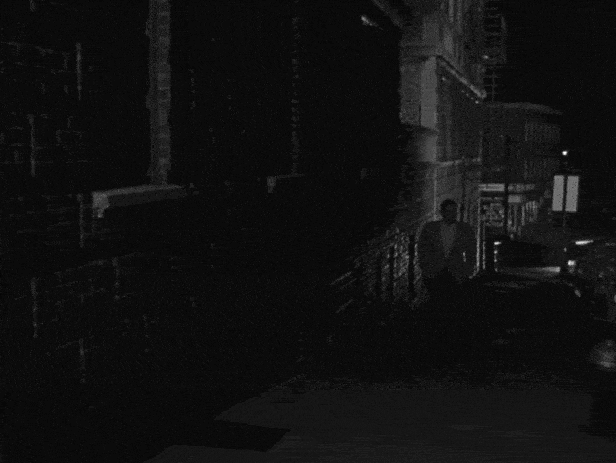
The first thing I focused on in trying to figure out this filming location was the hill Angie walks up. I knew there are a lot of similar hills on side streets leading up to Grand Concourse in the Bronx, and since it had been established that a couple scenes from Marty were shot on or near the Concourse (like the “Walking on Fordham Road” scene above), I thought perhaps this scene took place somewhere along there as well.
This filming location was eventually figured out by Blakeslee, partly because it was located near Grand Concourse, but mainly because it was located within a few feet of another confirmed location (See the “Bus Stop” scene below for more details).
Unfortunately the building was covered in scaffolding when I took a modern picture of the location, but at least you can still see the windows and brick patterns, which match up nicely with the film.
A Date with Nurses
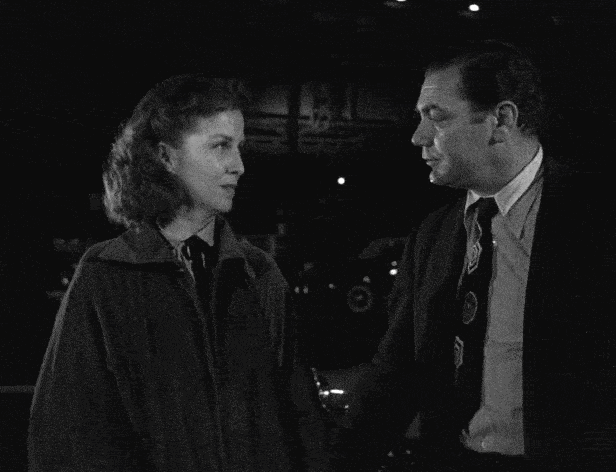
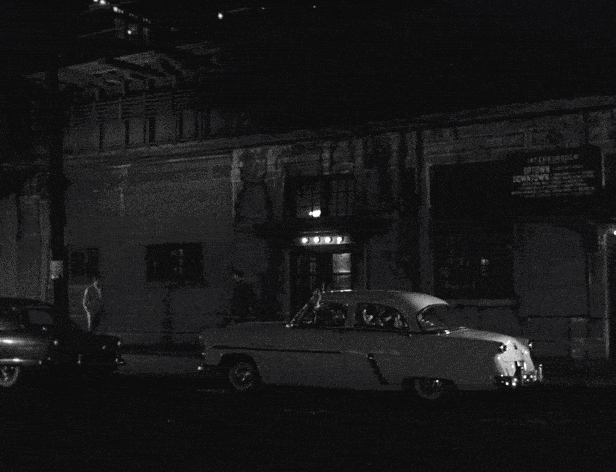
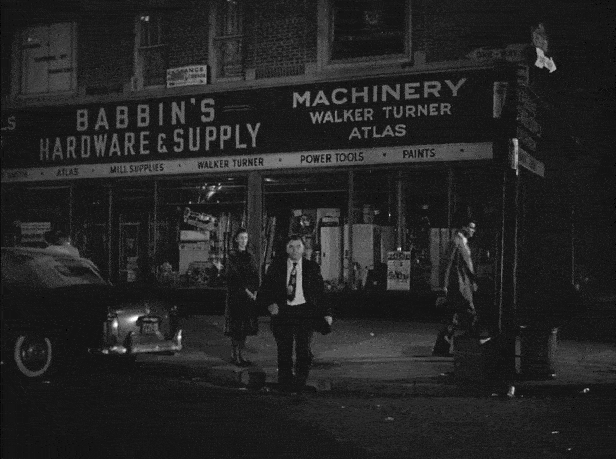
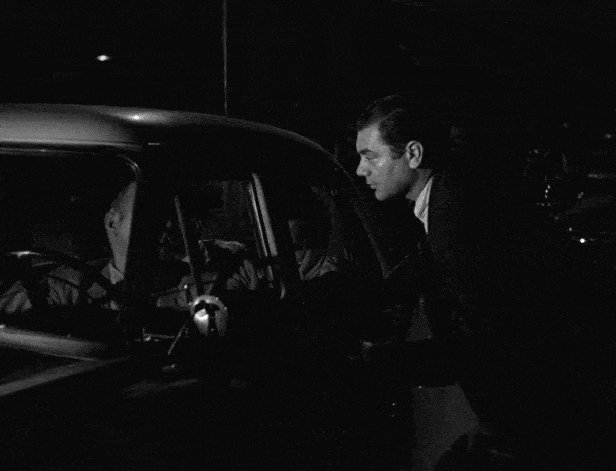
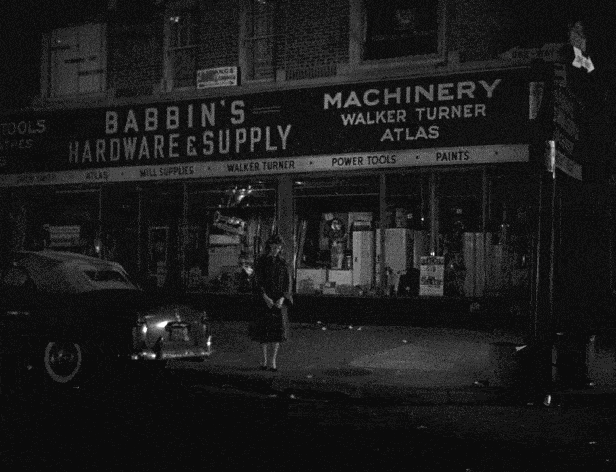
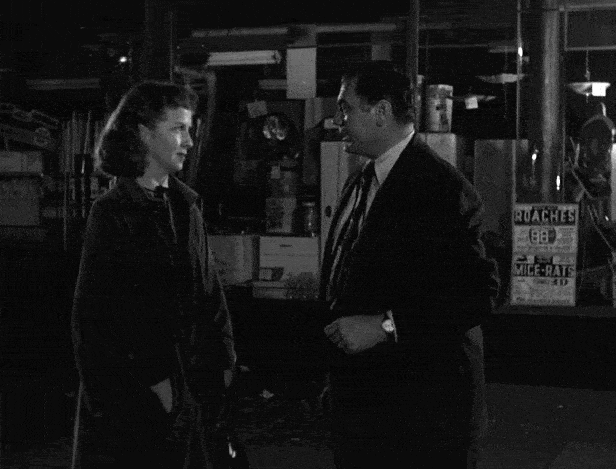
This was a pretty easy location to figure out. I just looked up Babbin’s Hardware in a 1954 Bronx phone book at the library and found an address of 3530 White Plains Road.
I noticed later that IMDB lists one of Marty’s filming locations as “Gun Hill Road & White Plains Road,” which is not exactly where this scene took place (it took place one block north at E 211th Street), but I assume whoever made that contribution was referring to this scene.
Walking to Marty’s Home
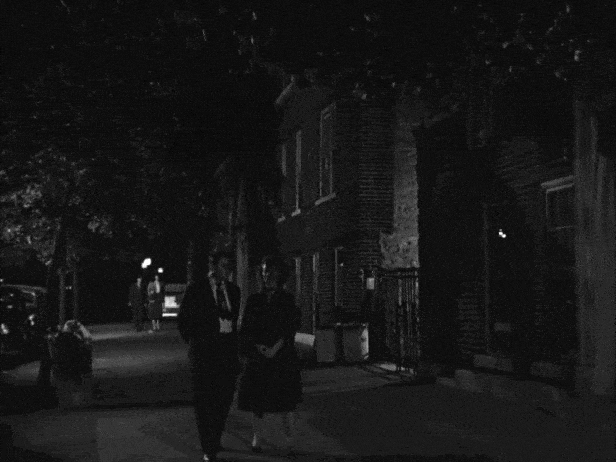
This location frustrated me immensely for a long time — mainly because I thought it would be easy to find, but it turned out to be quite a challenge. Granted, there weren’t any visible street signs or building addresses in this scene, but there was an underground subway entrance visible in the background, and I figured that would drastically reduce the number of possible places it could’ve taken place.
There are numerous subway lines in the Bronx, but I knew the majority of them were elevated trains. There was only one subway line that was exclusively underground, and that was the B/D train which mostly ran under Grand Concourse. So I figured it was just a matter of going to each subway station in Google Street View and look at the side streets that ran off of Concourse to see if I could find any buildings that matched the film.
I did this at least three times, eventually looking at every damn side street off of Grand Concourse, even if it wasn’t near a subway station. When that didn’t net me any results, I decided to walk along the entire subway line in person, just in case Google Maps somehow had a glitch in their imagery. But once again, I found nothing.
I considered that perhaps the buildings seen in the film had since been demolished, but most of the buildings that are currently on or near Grand Concourse pre-date 1954. And any lots that had modern buildings on them, I looked them up in the 1940’s tax photo archives to confirm the buildings that used to be there weren’t the ones seen in the film.
After a while, I started to get extremely irritated, because when I began looking for this location, I was certain it was going to be a quick and easy task. But it was not. I even brought Blakeslee into the fold, but he wasn’t having any luck either.
Then, suddenly it occurred to me that perhaps the scene was shot on Grand Concourse itself, opposed to a side street running off of it. I always assumed it would be a side street because the scene looked so quiet and mellow, and Grand Concourse is such a busy thoroughfare, but I figured it was worth exploring.
Starting at the northern end of the Concourse in Google Street View, I almost immediately found a set of buildings between 203rd and 204th Streets that looked promising. The styles looked very similar to ones in the film, but when I looked more closely, I could see they didn’t line up properly. However, before I moved on, I considered one last thing — maybe the image was reversed. So I took a one frame from the film and flipped it in Photoshop and lo and behold, it matched up perfectly! I think I did a literal double-take when I realized it worked.
When I shared the news with Blakeslee, he was equally flabbergasted. And after zooming in on Ernest Borgnine’s tie in the scene, he spotted that the pattern was flipped from what appears in the rest of the film.
So I learned two things: don’t ever assume a location will be easy to find, and don’t assume right isn’t left and left isn’t right.
Angie Finds Marty
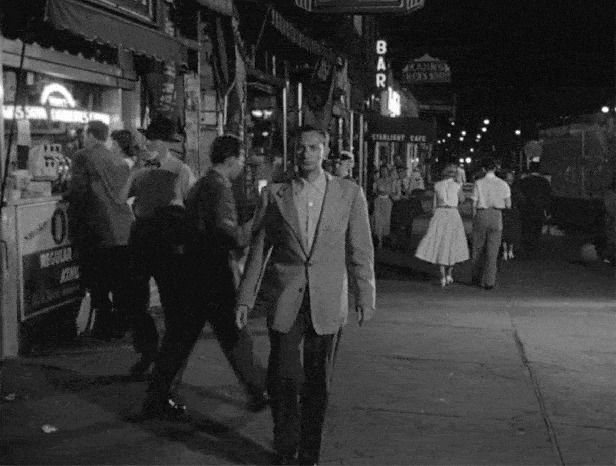
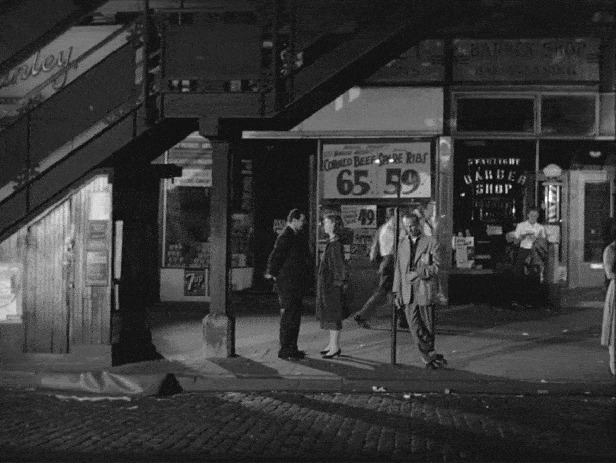
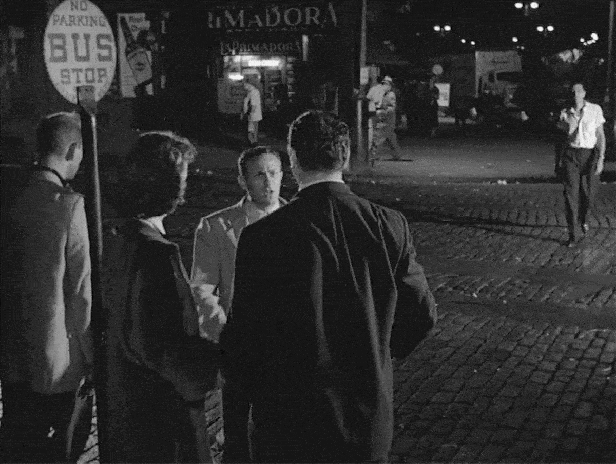
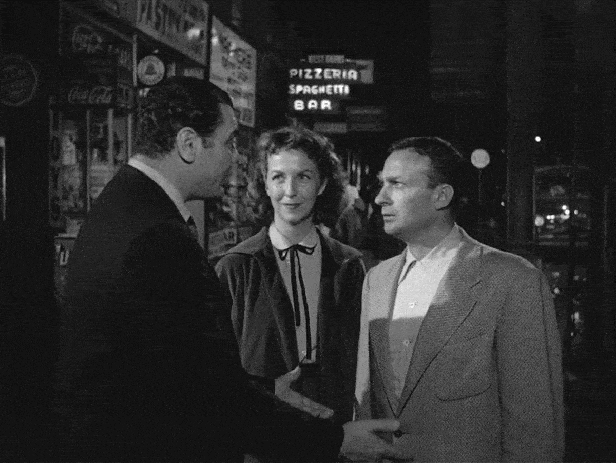
Like the “Date with Nurses” scene above, I found this filming location by looking up one of the business signs that appears in the scene in a 1954 Bronx Phone Directory. The sign that seemed the clearest to me was for a place called, “Stardust Cafe,” which I also thought was rather amusing since the ballroom from the earlier scenes took place at a “Stardust” as well.
When I looked up Stardust Cafe’s address in the phone book, I realized why it was so named. That’s because it was only a half block away from the Stardust Ballroom on Boston Road.
Unfortunately, the entire area where this scene took place looks very different today, and even the extant buildings from 1954 have been altered so much I couldn’t find any matching elements. The only thing that was sort of the same was the set of stairs leading up to the West Farms Square elevated subway station, which appears next to the bus stop Marty and Clara are waiting at. But I have a feeling that the stairs have been replaced since the time this scene was filmed.
The fact that I couldn’t find anything that was exactly the same from the film made me a little hesitant to call this location confirmed. Granted, this spot was pretty much across the street from the “Stardust Ballroom” location so it made logistical sense on a production-level, but I still wanted to find some better evidence. So, I went to the municipal archives to search through the tax photos.
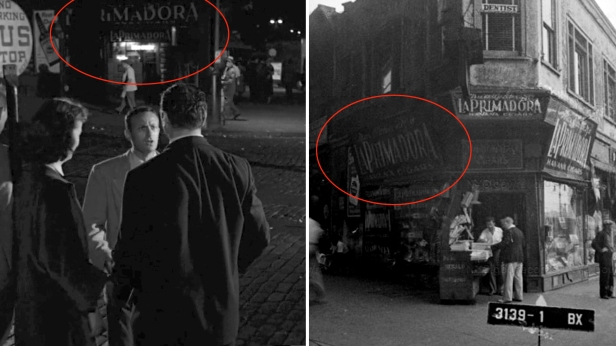
Unfortunately, I wasn’t able to find a whole lot in the municipal archives, but I did find one image of a building on the corner of E Tremont and Boston Road which matched the one seen across from the bus stop in the film. And with that, I was much more confident I found the right place.
Clara’s Apartment Building
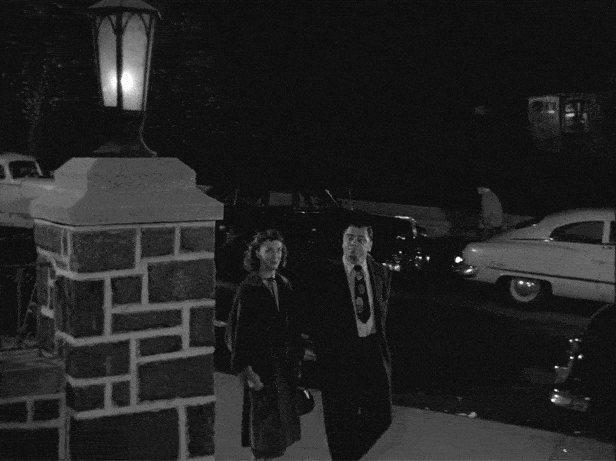
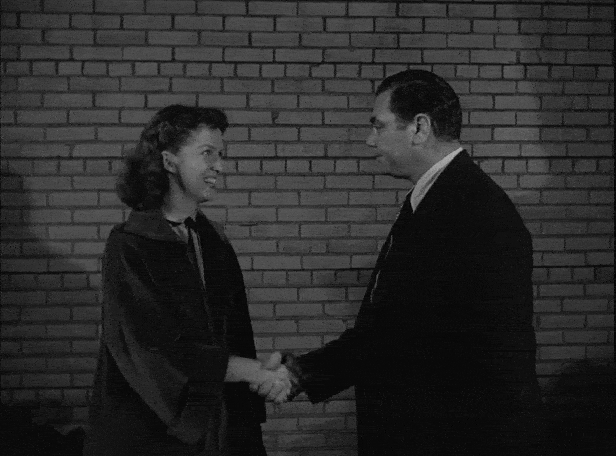
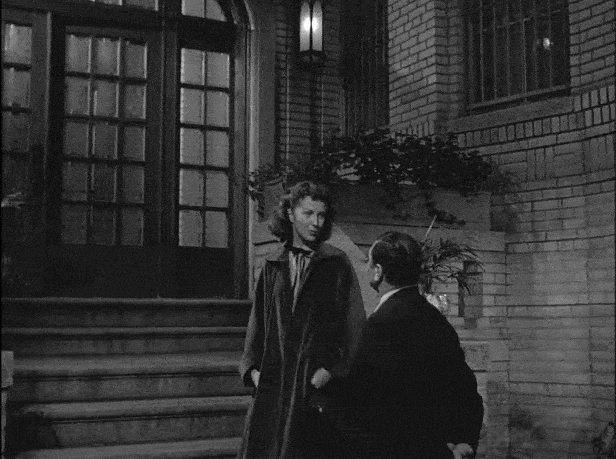
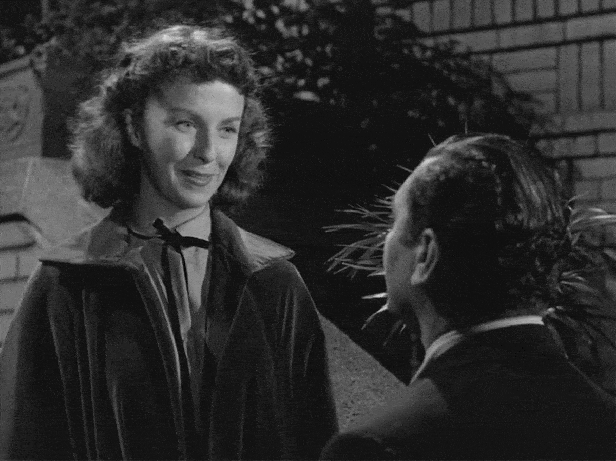
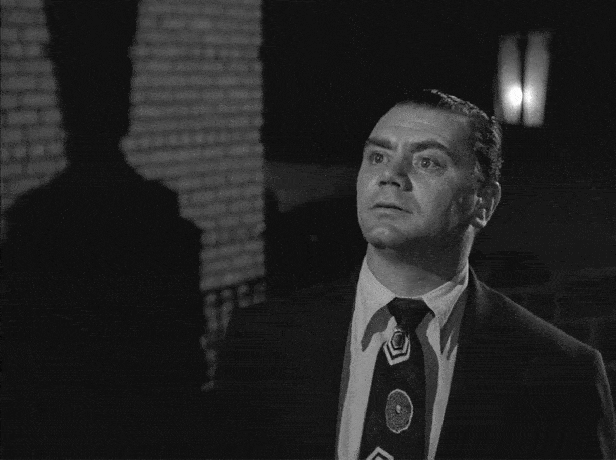
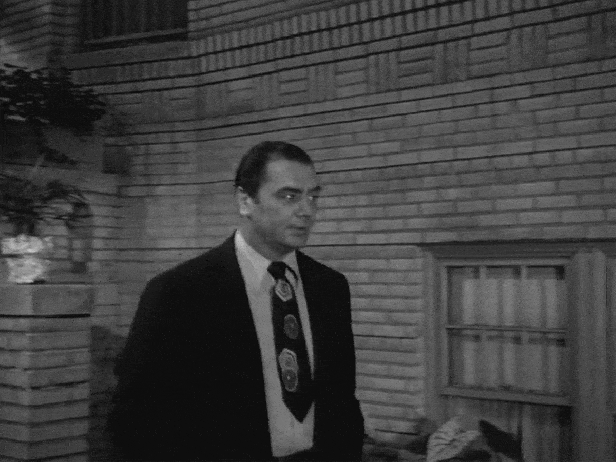
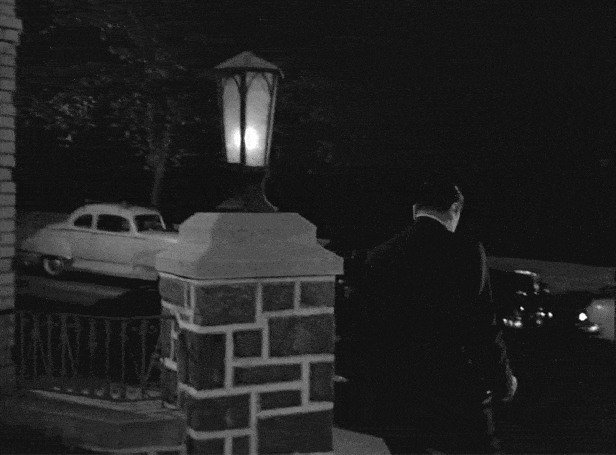
This was an incredible find and it was all done by my research partner, Jeff Blakeslee.
When I handed this filming location puzzle to him, the only potentially helpful clues I could pass along were: 1) the street seemed to have a slight incline to it, and 2) there appeared to be what looked like an odd-looking shack across the street on a slightly elevated hill.
Turns out I was wrong about that shack. Blakeslee figured out it wasn’t a shack at all, but was, in fact, a stationary subway car — most likely from the old Third Avenue El line.
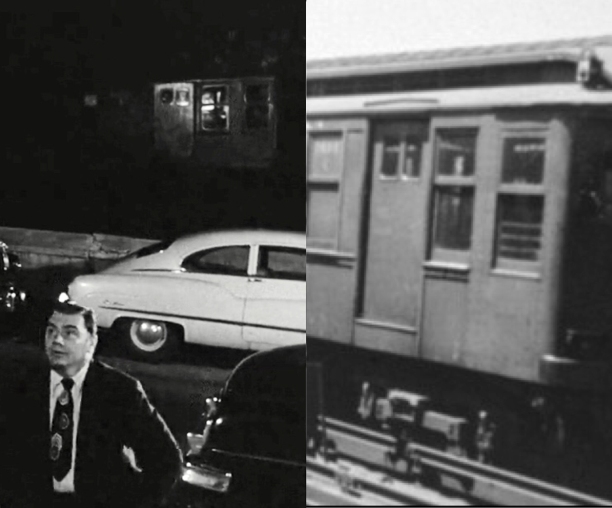
Then, the next thing he did was watch a movie on youtube that was shot between 1953-1955, showing an entire trip on the Third Avenue El line from one end to the other. (If you’re interested in New York Transit history, it’s definitely a video you should check out.) As the Third Avenue train traveled along Webster Avenue in the movie, Blakeslee noticed a side street that had a noticeable incline which would probably bring the building entrances to the same level as the subway cars. So, on a hunch, he went to the street in Google, and found that one of the apartment buildings matched the one in the film.
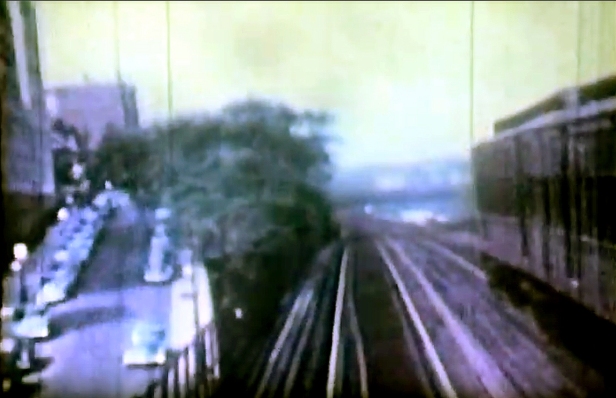
When I went there in person to take the modern pictures, I was delighted by how little the exterior had changed since 1954. Even the little imperfections in the brick wall still lined-up today. (See the second “before/after” image above.)
Whenever I think about this scene, I can’t help but be amazed on how Blakeslee was able to find its filming location from something I thought was a shack on a hill.
Bus Stop
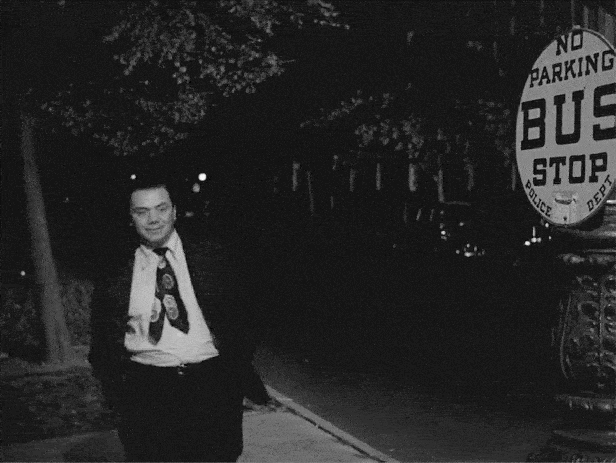
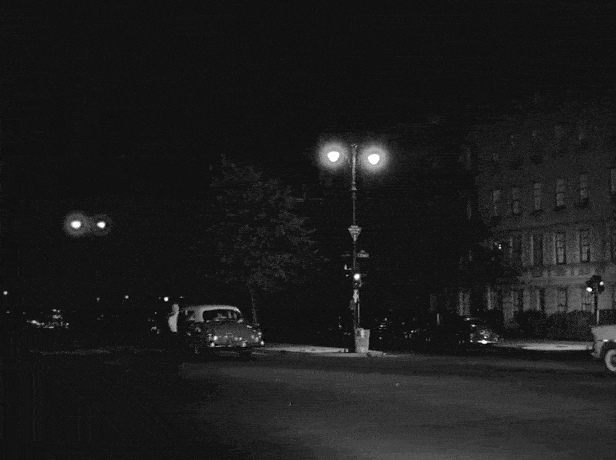
This was the first location I found because it was the most important one to me. The shot of Borgnine gleefully slapping the bus stop sign has become a somewhat iconic moment in movie history. I remember being very familiar with this shot long before I ever saw the film or understood the full context of the scene. I remember in the 1990s, NYC movie theaters would show a montage of famous movie clips before their feature presentation, and one of the clips was this sign-slapping moment.
So when I figured out the filming location for this scene, it was personally one of the more rewarding finds. And the way I found it was very simple — while searching through promotional photos from the film, I came across an image of Borgnine standing next to a bus stop sign that looked very much like the one in this scene. And amazingly, it was so wide, that it clearly showed the street sign, indicating that they were at Grand Concourse and E 204th Street.
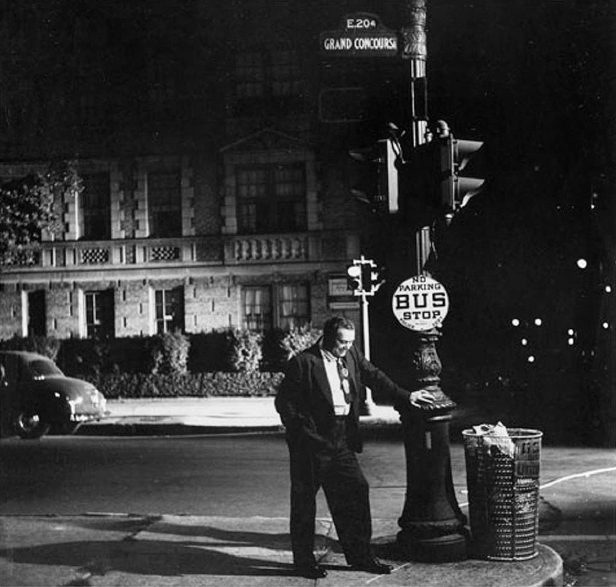
Of course, when I went to the intersection in Google Street View, I was delighted to see that the building that appeared in the background when Marty runs across the street to hail a cab perfectly matched the building on the southwest corner of Gand Concourse and E 204.
I have no idea if I ever would’ve found this location had it not been for this very informative promo photo being available. And if I hadn’t figured out this location and passed on the info to Jeff Blakeslee, perhaps he never would’ve found the filming location for “Angie Searches For Marty” (see above) which was practically on the same street corner.
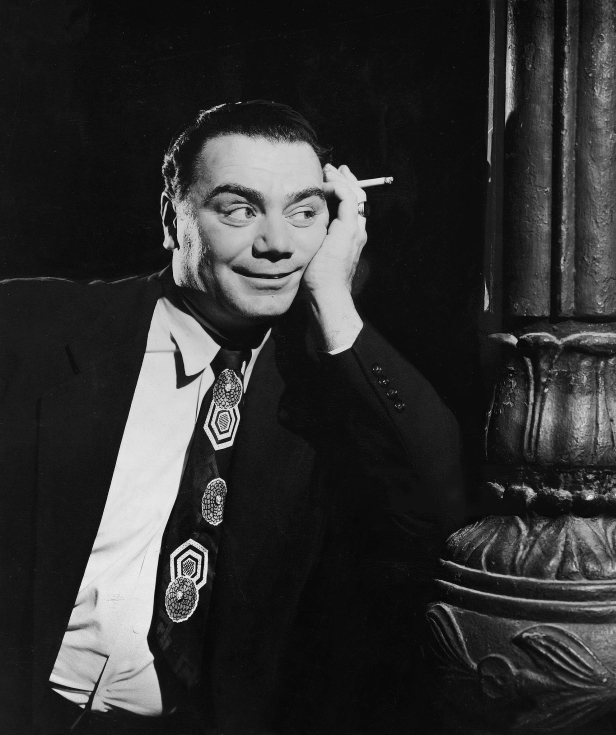
So, I learned a somewhat obvious but valuable lesson — that promotional and behind-the-scenes photographs can be extremely useful sources for figuring out a filming location. And now, whenever a start a new film project, the first thing I do is go to Google Images and grab as many promotional photos as possible.
Going to Mass
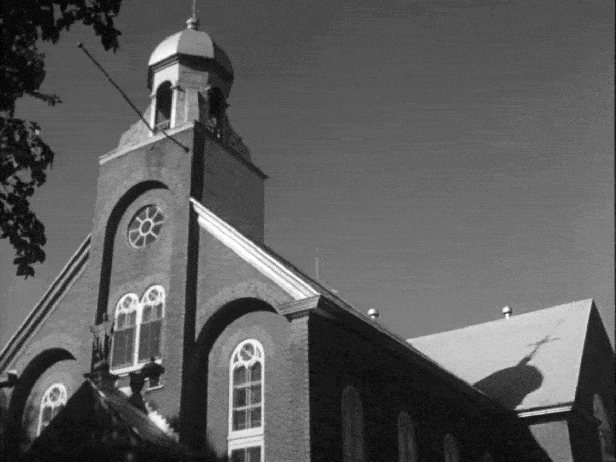
This was the last location to be solved, and frankly, it wasn’t very high on my priority list. Mainly because the bulk of the scene that took place on the church steps was obviously filmed on a set built at Samuel Goldwyn Studios in California. I figured the quick establishing shot of the church was either a second unit shot or just some stock footage.
Turns out I was wrong on both counts. It was actually a clip directly lifted from Hitchcock’s 1953 film, I Confess, starring Montgomery Clift. (Big thanks to Daniel Sneed, for letting me know about it!) Admittedly, I don’t quite know how exactly this happened since I Confess was a Warner Brothers picture and Marty was released by United Artists. My only guess is that someone was doing someone else a favor.
Fortunately, this 19th century church is still around today and looks more or less the same as it did in these films, except for the bell tower that got altered in 1958. However, since it’s located up in Quebec City, Canada, I wasn’t able to take a modern photo for my “before/after” picture, so I had to rely on Google Street View to show what it looks like today.
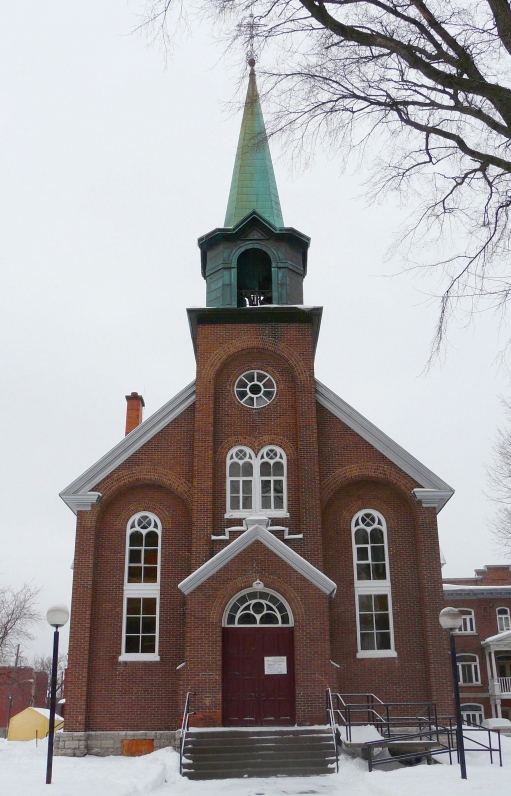
If you want to see more footage of Eglise Saint-Zéphirin de Stadacona, make sure to check out Hitchcock’s film, or watch the 1996 French-Canadian film, The Confessional, whose plot revolves around the making of the Hitchcock film.
Marty has always been one of favorite films, not just because it has NYC filming locations, but because it’s one of those simple little films without much of a plot, that just lets the characters talk and be real. Every time I watch that phone call scene where Marty gets turned down for a date, it breaks my heart.
And you can’t help but love a movie that ends with an ugly duckling realizing that he isn’t such a dog after all. (Sorry for mixing my metaphors.)
The only location I couldn’t figure out was the cafe/drugstore Marty and Clara go to before they go to Marty’s home. Unlike the Stardust Ballroom (which I’m pretty sure was a set), I can’t tell if this interior was shot on-location or on a Hollywood soundstage (but I’m leaning towards it being a real location). However, if it was shot at a real location, it still could’ve been done back in California.
Interiors are always tricky to figure out. I think the only way I’ll ever get an answer is if I find some official production notes that clearly indicates where they shot that scene. But in the meanwhile, I’m pretty happy with all the locations Blakeslee and I were able to discover.
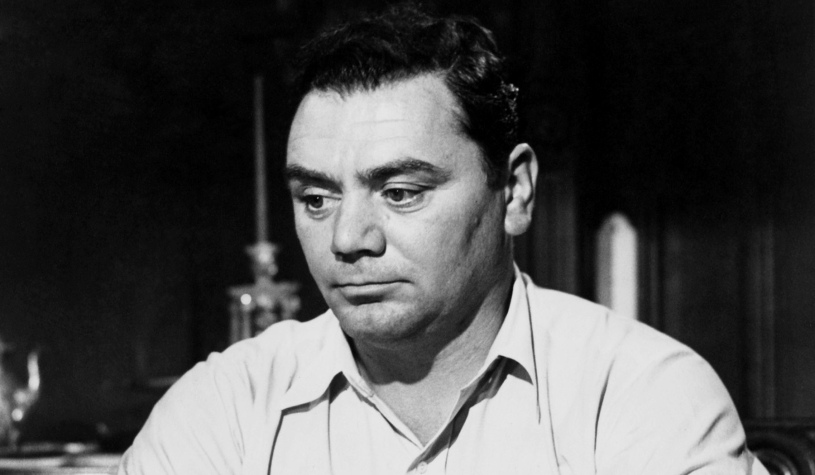
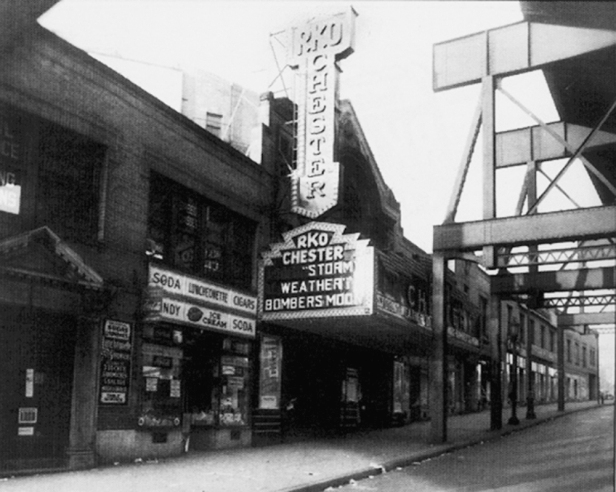
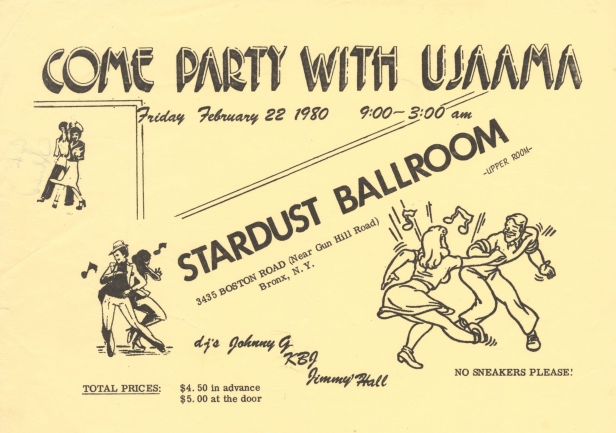
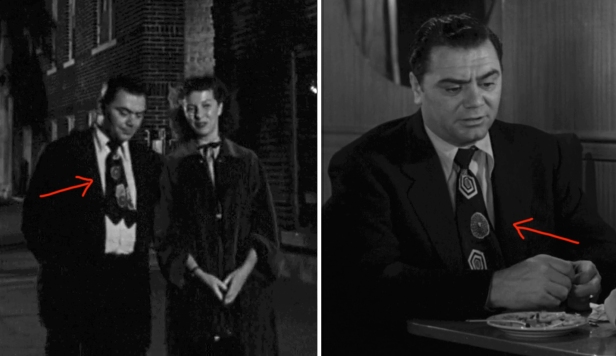






Thank you so much for your research and this fascinating article! As a native Bronxite, Italian American, Marty is a movie that’s very dear to my heart particularly for its realistic depiction of a typical Italian American family (Chayefsky had a phenomenal facility for authentic dialogue). My mom and aunts used to go dancing at the Stardust Ballroom before they were married.
Like you, I’ve spent a lot of time trying to locate the exact locales where the movie was filmed (I found Babbin’s Hardware back in the 1970s when it was still in business). Your article was akin to hitting the jackpot. I was especially happy to find out the location of Clara’s apartment building, which always struck me as particularly attractive.
The one location that you didn’t mention in your article was Marty’s house. A still from the movie shows a house number of 2454, and the shot of the street when they are leaving for mass shows houses that resemble homes on a stretch of Park Avenue in the Bronx, across the street from the Metro North tracks. (but those house numbers are in the 4400s). Had you tried to locate the house and were unsuccessful? Or do you think it was a set (although it doesn’t seem to be)?
LikeLike
Hey Michael — thanks for the comments. I always love hearing from a native Bronxite.
Yeah, I didn’t include Marty’s house because I’m nearly positive it was done on a soundstage. I don’t have any definitive proof, but the sound and lighting quality of the scene seems to indicate that to wasn’t shot on location.
I’d still love to figure out where they shot that cafe/drugstore scene, which I suspect was a real location.
LikeLike
It may well have been a sound stage, but I always was under the impression that the exterior may have been one of the single family houses in the area, such as the ones on Arthur between Fordham and 189th. Love this site! Thanks again for all your great work.
LikeLike
Was born and raised in this neighborhood! While I was too young to get to appreciate the sight of the RKO Chester myself—the building was demolished when I was thirteen!—I am elated to find such a rich and accessible history available online. To see the images of this theatre in its prime gives me such a warm feeling!
LikeLiked by 1 person
WEST FARMS WAS ALWAYS A BAD AREA .
NOISY ELEVATED TRAINS.
DIRTY – SMELLY BRONX RIVER NEAR BY. MOSQUITO CENTRAL .
1956 I SEEN SINBAD THE SAILOR AT THE RKO CHESTER .
WENT TO PS 6 BRONX JUST UP TREMONT 1 BLOCK .
THIS AREA WAS LEADING EDGE BRONX BLIGHT !
ARTHUR AV. IS FAR AWAY FROM WEST FARMS .
MORRIS PARK HAS MORE UP SCALE ITALIANS, IS MUCH CLOSER TO WEST FARMS SQ.
LikeLike
Yeah the geography in Marty is a bit muddled, while in the same general area, they definitely bounce around in ways that aren’t natural. West Farms was also briefly featured in 1962’s “Two for the Seesaw,” starring Robert Mitchum and Shirley MacLaine.
LikeLike
You’ve done some terrific work here and in the other movie listings! Thanks very much. I think that the shot of Clara and Marty at the little care MAY have been a cafe that used to be above the Metro North railroad station at Third Ave. and Fordham, north side, under the El. You can see it here https://1940s.nyc/map/photo/nynyma_rec0040_2_03273_0102#16.42/40.861059/-73.889235 behind where the guy on the left is crossing. I used to pass that all the time in the sixties and I think that might be it. There is currently a newsstand at 413 East Fordham but I do not believe that is the location. I recall it as directly under the El tracks.
LikeLike
I just wanted to add to my previous comment that if you view the photo of 401 East Fordham here https://nycma.lunaimaging.com/luna/servlet/detail/NYCMA~6~6~28708~600798:401-East-Fordham-Road?sort=borough%2Cblock%2Clot%2Czip_code — enlarging it indicates that it was a seller of textbooks in 1940. However I recall that by the sixties it was a cafe with a layour similar to shown in the movie when Clara and Marty met.
LikeLike
Thanks for the tip, Gary. Definitely worth exploring. It certainly fits in with the general filming area used by production. Also happens to be in my old neighborhood (I used to live at Marion and 193rd), and I’d use that station all the time, but that was a half a century after this film was made.
LikeLike
The Hardware store on WPRD was owned by relative red buttons- was in there a few times. In 1955 As they were filming a scene at the bar, which was filmed in a real bar located at WPRD and Boston Road. My parents lived at a nearby housing project. My mom and her friend Violet, both were about age28-9 watched the filming crew and when finished Borgnine walked across White Plains rd to get some pizza. He walked close to my mom and her friend, and mom said; “Mr. Borgnine, this is my friend Violet, (Very Shy) she is a fan of yours”. Borgnine now with a grand smile, said;, “Well hello Violet, its a pleasure to meet you”. Borgnine and Violet also with a broad smile spoke for a moment or so then Borgnine moved on to get his pizza, but still wearing a big smile.
LikeLike
Not the Movie Marty, but the movie: “The Godfather”, Near to where they filmed the Bar scene in Marty; White Plains Rd at Boston Rd was “Louie’s.” The was the little restaurant, where Michael (Al Pacino) shoots Captain McClusky,(Sterling Hayden) and Sollozzo, (Al Lettieri)
LikeLike
Thanks for great work on showing where the sites are.
Surprisingly, it wasn’t until last night that I’d seen Marty for the first time ever, on TCM.
I hadn’t heard of the RKO Chester before, so I googled it and came to find this site.
When I was in high school in the late 1970s, I used to take the bus through West Farms Square. I would wait for the Q44 every afternoon under the El at Boston Rd and W Farms Rd. All the storefronts then were empty and abandoned, with almost no pedestrians going by except for those lining up for the bus. And because that’s how I’d seen it during those years, it felt to me like it must have always been that way.
So it was eye-opening to me to see that there was actually a 2,500 seat movie theater a few steps away that I’d been completely unaware of til now. And to see such a busy street scene there (albeit for a movie) was mind-blowing. The contrast of my empty, shutter-gated view, to the active one that was there years before just boggles me.
It was also interesting to see that even though the Chester was re-used as a garage, they still kept some of the original fixtures. I’d also lived near the RKO Keith’s in Flushing, and it was sad to see pieces of the movie palace demolished over time.
And being a transit geek, I liked finding where the 3rd Ave El ran by Clara’s apt building.
Thanks very much for finding these things!
LikeLike
Not sure is you know that Babins Hsrdware is directly across White Plains Road from Louis Restaurant used in The Godfather.
I may be wrong but when Marty runs across WP Road to speak to Frank Sutton in the Nurses scene. It could have been right it front of Louis. .
LikeLike
I was trying to find out about the bar. I was curious about the name, or if it was even a real place. I didn’t see any reference to it in your article. Do you know anything about the bar?
LikeLike
The bar was a Hollywood set.
LikeLike
Thank you for the exemplary research! I loved the transitioning effect of the then and now pics of the locations. Visited many movie blogs and sites which do this stuff but none beats the efforts that you and your friend put in. While you mention that Marty’s house could be a sound stage on studio back lot, I found this article by a faculty https://www.academia.edu/34542467/MARTY_A_Tribute_to_the_Bronx_NY Google maps indicates that the house has been demolished now. Thank you again and look forward to exploring your website for more exciting information.
LikeLike
Thanks for the comment. Yes, I read that article a few years back but found that some of it appeared to be just conjecture. I did investigate the theory that the house exterior was shot on Belmont Avenue off Fordham Road, including an extensive search of 1940s tax photos, but found no evidence of it. Also, as I mentioned in another comment, the sound and visual quality of the scene lends itself to studio work.
LikeLike
Yes I found that hard to swallow as well. He implied the address was 2454 Belmont Ave., but that was an apartment building. I wouldn’t entirely exclude the possibility the exterior belonged to a house in the Bronx, but perhaps another neighborhood.
LikeLike
Great research! It is one of my favorite movies. My only regret is that the movie doesn’t end with Marty ending up at Clara’s apartment, with her greeting him and letting him come in as she is going to go get her coat. I wanted that last connection between the two, instead of Marty on the phone.
LikeLike